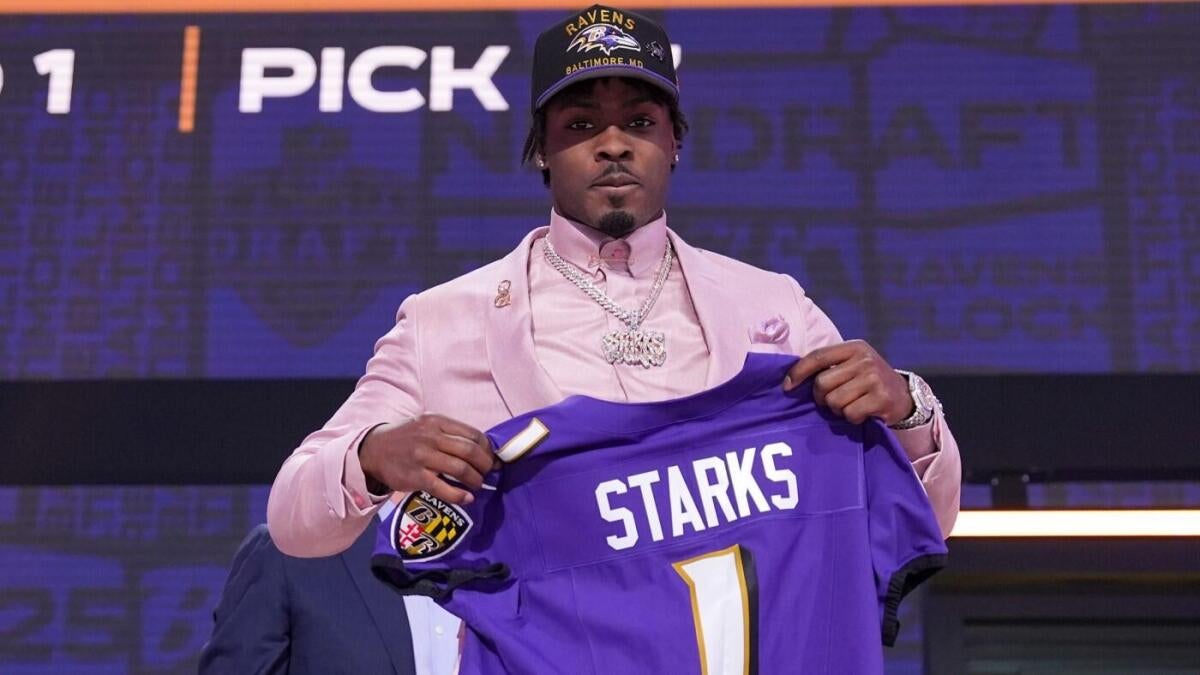“`markdown
Analyzing Eric DeCosta’s Draft Philosophy: A Blueprint for Sustainable Success
Few NFL executives have mastered the art of roster-building like Baltimore Ravens GM Eric DeCosta. His draft philosophy—a blend of economic theory, disciplined scouting, and long-term vision—has become a case study in how to sustain competitiveness in a league defined by parity. By prioritizing volume, value, and flexibility over short-term fixes, DeCosta has turned the Ravens into a perennial contender. Let’s break down the key pillars of his approach and why they work.
The “At-Bat” Mentality: Why More Picks Equal More Wins
DeCosta’s strategy hinges on a simple but powerful idea: *increase your chances of hitting by stepping up to the plate more often*. In draft terms, this means accumulating picks to maximize opportunities for finding talent. The inspiration? Richard Thaler and Cade Massey’s *The Loser’s Curse*, which exposed how teams often overpay for draft positions due to emotional needs rather than cold, analytical value.
– Mitigating Risk: The draft is inherently unpredictable. Even “can’t-miss” prospects bust, and late-round picks become stars. By stockpiling selections, the Ravens spread risk and increase odds of landing contributors.
– Flexibility: More picks mean more trade leverage. DeCosta famously traded back three times in the 2019 draft, turning five picks into 11—a haul that included Pro Bowlers like WR Marquise Brown and LB Jaylon Ferguson.
This approach isn’t just theoretical; it’s backed by data. Teams with extra Day 3 picks (Rounds 4–7) historically find starters at twice the rate of those with fewer selections.
Best Player Available vs. Need: The Ravens’ Discipline
While some teams reach for positional needs, DeCosta adheres to a strict *best player available (BPA)* mantra. This requires patience and trust in scouting—traits the Ravens have honed over decades.
– Case Study: Kyle Hamilton (2022 Draft): When the Ravens drafted safety Kyle Hamilton at No. 14, they already had two established starters at the position. Critics questioned the logic, but Hamilton became an All-Pro by Year 2, proving BPA’s upside.
– Avoiding the “Loser’s Curse”: Teams picking early often overvalue prospects due to desperation (e.g., QBs drafted top-10 on “potential”). The Ravens, by contrast, let the board come to them.
The BPA strategy also aligns with DeCosta’s belief in *positional value*. Elite talent at premium positions (OT, CB, pass rusher) outweighs reaching for a lesser player at a need spot.
Scouting and Development: The Ravens’ Secret Sauce
DeCosta’s philosophy only works with elite talent evaluation. The Ravens’ scouting department is renowned for:
– Traits Over Production: They prioritize athleticism, intelligence, and intangibles. Lamar Jackson (2018) and Patrick Queen (2020) were drafted based on upside, not just college stats.
– Late-Round Gems: From Hall of Fame LB Terrell Suggs (Round 1, 2003) to Pro Bowl G Marshal Yanda (Round 3, 2007), the Ravens consistently find stars outside the top 32 picks.
Their developmental program is equally critical. Coaches like John Harbaugh and staff specialize in refining raw talent—turning mid-round picks into starters (e.g., TE Mark Andrews, a 2018 third-rounder).
The 2025 Draft: A Perfect Storm for DeCosta’s Strategy
DeCosta has hinted that the 2025 class is unusually deep, particularly at offensive line and cornerback—two positions the Ravens prioritize. With 10 projected picks (including compensatory selections), Baltimore is poised to:
– Trade Down for Value: If top targets are gone early, expect DeCosta to move back and add Day 2/Day 3 capital.
– Double-Dip at Key Spots: The Ravens often draft multiple players at one position (e.g., two edge rushers in 2022) to ensure competition and depth.
Long-Term Impact: Building a Dynasty, Not a Flash
DeCosta’s methods aren’t about splashy headlines; they’re about *sustainable winning*. Consider:
– Cap Health: Drafting well reduces reliance on expensive free agents. The Ravens consistently rank among the NFL’s youngest teams while remaining playoff contenders.
– Culture Fit: By valuing character and work ethic, the Ravens avoid locker-room distractions—a key reason they’ve had just one losing season since 2015.
Conclusion: Lessons for the NFL
Eric DeCosta’s draft philosophy is a masterclass in disciplined team-building. By embracing volume, valuing BPA, and investing in scouting, the Ravens have created a model that transcends trends. In an era where teams chase quick fixes, Baltimore’s patience and process offer a timeless lesson: *Great rosters aren’t built overnight—they’re drafted, developed, and sustained.*
For the Ravens, the future isn’t just bright; it’s meticulously planned.
“`











